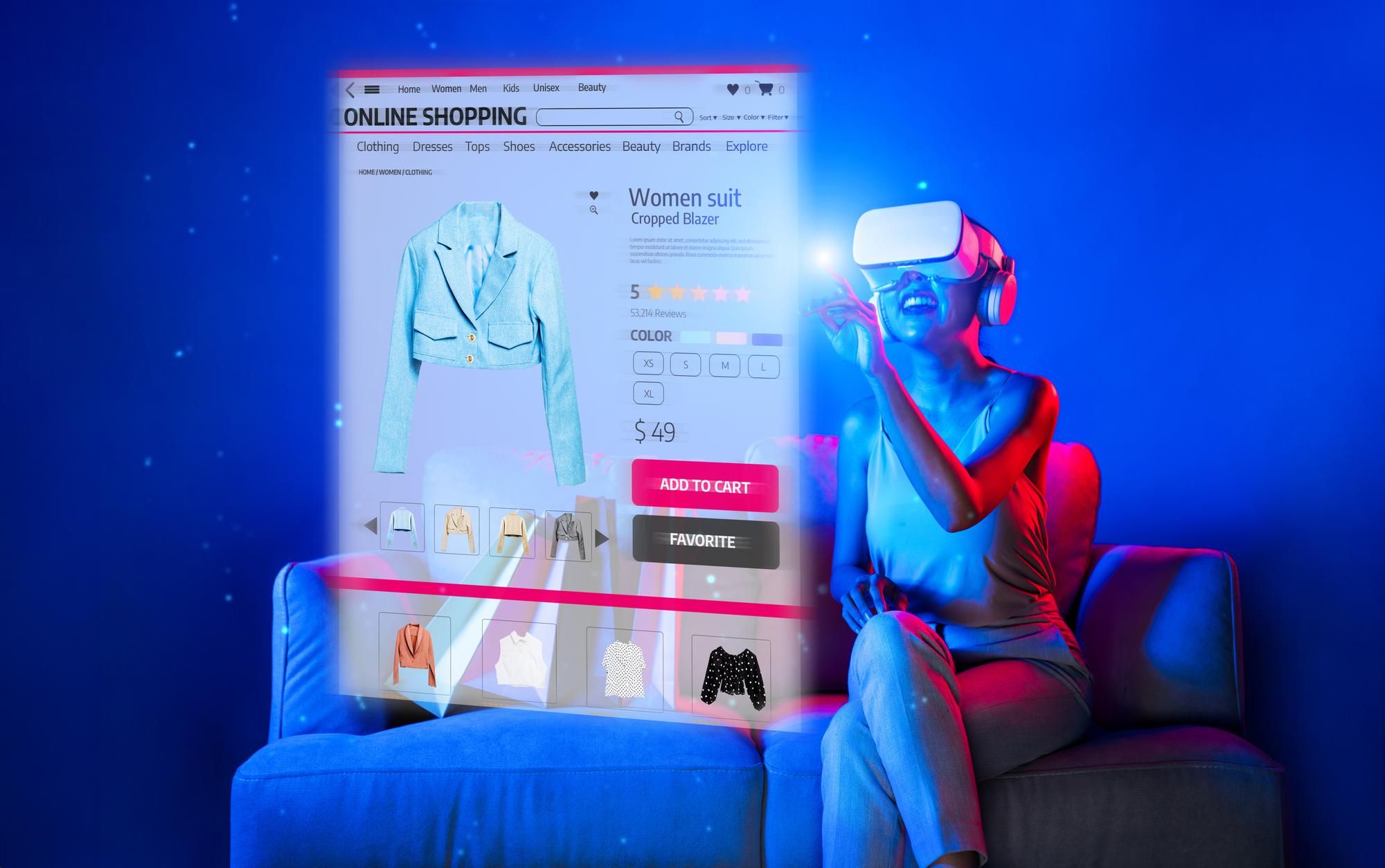Can AI Replace Window Shopping? A Look at Visual Discovery Tech

For generations, window shopping has been a delightful pastime—a leisurely stroll past storefronts, taking in new trends, spotting something that catches your eye, and perhaps even imagining it in your life. This experience, driven by visual inspiration and serendipitous discovery, has long been a challenge to replicate in the boundless, yet often keyword-driven, world of online retail.
Enter AI visual discovery. This innovative application of artificial intelligence is fundamentally changing how we browse and buy online, bringing the magic of window shopping to our screens with unprecedented precision and personalization. It’s not about replacing the joy of a physical stroll but enhancing and expanding it for the digital age, creating a new paradigm for visual commerce AI.
The Evolution of Online Product Discovery: Beyond the Search Bar
Traditionally, online shopping has relied heavily on text-based searches. You know what you’re looking for, you type it in, and you hope for relevant results. While effective for specific items, this method often falls short for exploratory browsing or when you don’t have a precise idea of what you want—much like the experience of traditional window shopping.
AI visual discovery shifts this paradigm by enabling computers to “see” and interpret images and videos. Utilizing advanced computer vision, deep learning, and machine learning, AI can understand visual content with remarkable accuracy, mimicking human sight but with far greater speed and scale. This means no more struggling to articulate that “perfect shade of teal” or “that unique style of distressed denim.” Instead, a picture can be worth a thousand search queries.
How AI Visual Discovery Reinvents Window Shopping
AI visual discovery empowers shoppers in several key ways, making online browse more intuitive, engaging, and personal:
- Visual Search and Product Identification: Imagine seeing a stylish jacket on social media or in a magazine and instantly finding where to buy it online. Visual search tools, powered by AI, allow users to upload an image or take a photo, and the system immediately identifies similar products within a retailer’s inventory. This eliminates the guesswork and frustration of trying to describe a visual concept with words. Google Lens, for instance, now handles nearly 20 billion visual searches monthly, with 20% of those being shopping-related, underscoring the growing adoption of this technology.
- Hyper-Personalized Recommendations: Beyond just finding similar items, AI analyzes visual preferences to offer tailored suggestions. By understanding patterns in product aesthetics, colors, textures, and styles that a user interacts with, AI can curate highly relevant product feeds. This goes beyond simple “customers who bought this also bought…” to truly understanding an individual’s evolving taste. It’s like having a personal stylist who instinctively knows what you’ll love, making window shopping with AI a truly curated experience.
- Enhanced Browse with Generative AI: One of the most exciting advancements in AI visual discovery is the rise of generative AI. Instead of merely presenting existing product images, generative AI can create dynamic, immersive scenes and looks tailored to the user. This means the online “storefront” can dynamically adjust to your preferences, showcasing products in contexts that resonate with your personal style.
- Virtual Try-Ons and Augmented Reality (AR): AI-powered AR allows shoppers to virtually “try on” clothes, see how furniture looks in their home, or even apply makeup, all from their device. This bridges the gap between online Browse and real-world visualization, reducing purchase uncertainty and enhancing confidence. For example, the IKEA Place app uses AI to analyze room dimensions and suggest optimal furniture placement, while Nike Fit scans feet to recommend the perfect shoe size, significantly reducing fit-related returns.
The Benefits for Shoppers and Retailers
The impact of AI visual discovery extends far beyond mere convenience, offering significant advantages for both consumers and businesses:
For Shoppers:
- Reduced Friction in Product Search: No more struggling with keywords or endlessly scrolling. Finding what you want becomes as simple as seeing it.
- More Accurate and Relevant Results: AI’s ability to understand visual nuances leads to highly precise search outcomes, minimizing irrelevant suggestions.
- Enhanced and Enjoyable User Experience: The visual, interactive nature of AI-powered Browse makes online shopping more engaging and less like a transactional chore.
- Effortless Product Discovery: Discover new items and styles you might not have found through traditional search, broadening your horizons and sparking inspiration.
- Increased Confidence in Purchases: Virtual try-ons and realistic visualizations reduce doubts, leading to more satisfying purchases and fewer returns.
For Retailers:
- Improved Conversion Rates: When shoppers find what they’re looking for more easily and confidently, they are more likely to convert into buyers.
- Higher Average Order Value (AOV): Relevant recommendations and personalized suggestions can encourage shoppers to explore more products and make additional purchases.
- Reduced Return Rates: Better visualization tools mean fewer discrepancies between expectation and reality, leading to a decrease in costly product returns.
- Deeper Customer Insights: AI analyzes visual interaction data to provide valuable insights into customer preferences and trends, informing product development and marketing strategies.
- Scalable Personalization: AI enables retailers to offer individualized shopping experiences to millions of users simultaneously, a feat impossible with manual methods.
Glance AI: A Glimpse into the Future of Visual Commerce
Leading the charge in this new era of AI shopping is platforms like Glance AI. Glance AI is revolutionizing how consumers discover and interact with products, especially through its innovative approach to visual commerce AI.
Glance AI transforms the user’s smartphone lock screen into a dynamic, personalized visual storefront. Instead of static notifications, users are greeted with AI-generated, shoppable visuals—complete with outfits, accessories, or home items that are curated based on their expressed preferences and visual interactions. This allows for “zero-click discovery,” where users don’t need to open an app or type a search query; they just “glance” to discover new styles and products.
Glance AI leverages sophisticated models to create stunning, immersive scenes tailored to each user. By analyzing appearance inputs (like a selfie, body type, skin tone, and hair type), it generates digital avatars and then creates editorial-style fashion looks that resonate with the user’s unique profile. The system is designed to learn from user interactions, subtly adapting its recommendations to evolve with the user’s taste over time. This continuous learning ensures that the shopping experience remains fresh and highly relevant, making AI visual discovery a truly adaptive and personal journey.
The Road Ahead for AI Visual Discovery
The journey of AI visual discovery is just beginning. As AI models become even more sophisticated, we can expect:
- Even more nuanced personalization: AI will not only understand what you like but anticipate what you might need based on context, events, and even your mood.
- Seamless integration across platforms: The boundaries between Browse, discovering, and purchasing will continue to blur across various digital touchpoints.
- Interactive and immersive experiences: Expect more sophisticated AR, VR, and even haptic feedback to make online window shopping with AI an almost tangible experience.
- Co-creation with AI: Future iterations might allow users to collaborate with AI to design custom products or experiences based on their visual inspirations.
In conclusion, AI visual discovery is rapidly reshaping the landscape of online retail. By bringing the essence of window shopping—visual inspiration, serendipitous discovery, and effortless Browse—to the digital realm, AI is not replacing the familiar pastime, but rather augmenting it, creating a more engaging, personalized, and efficient way for consumers to connect with the products they love. The future of shopping is undoubtedly visual, and AI is the engine driving this exciting evolution.





